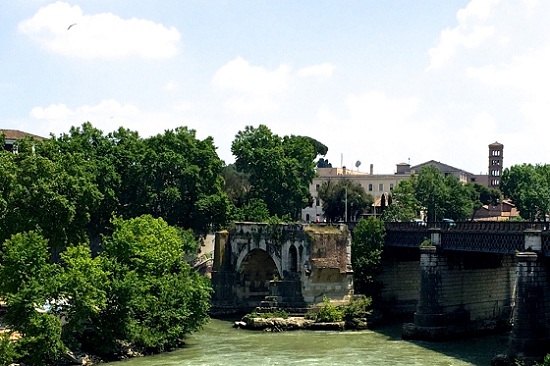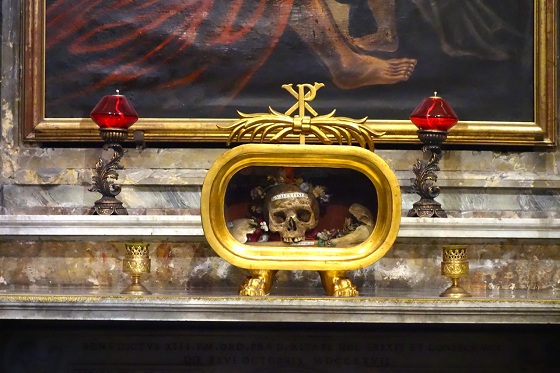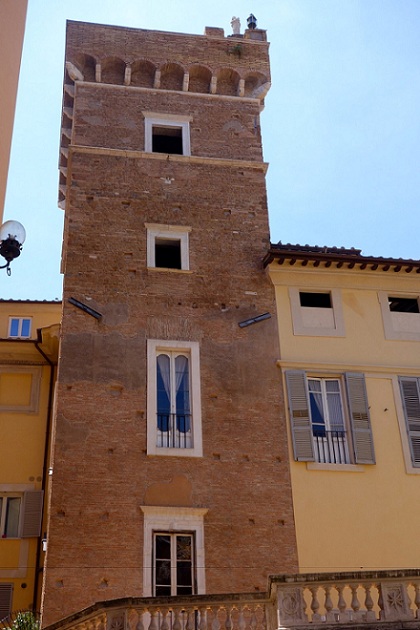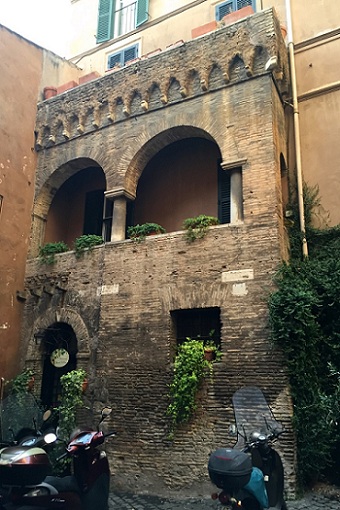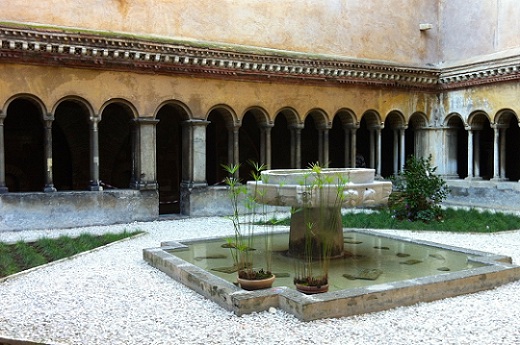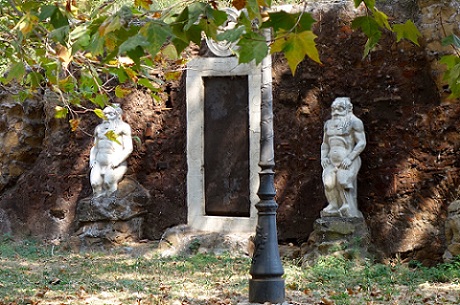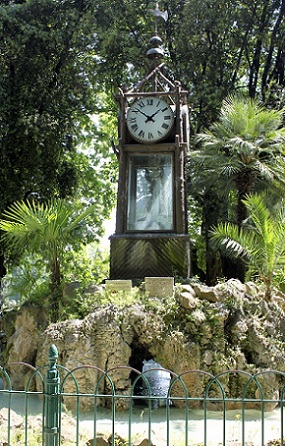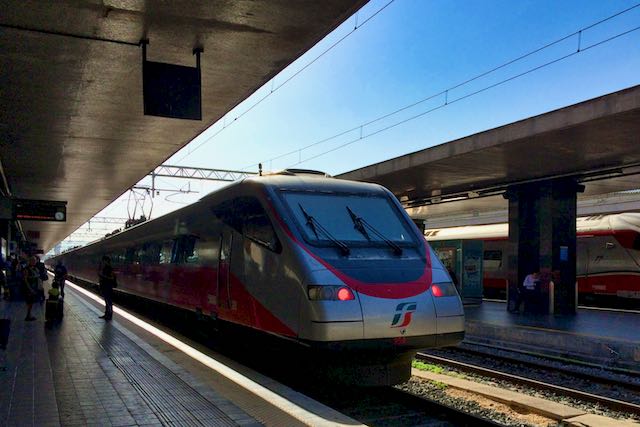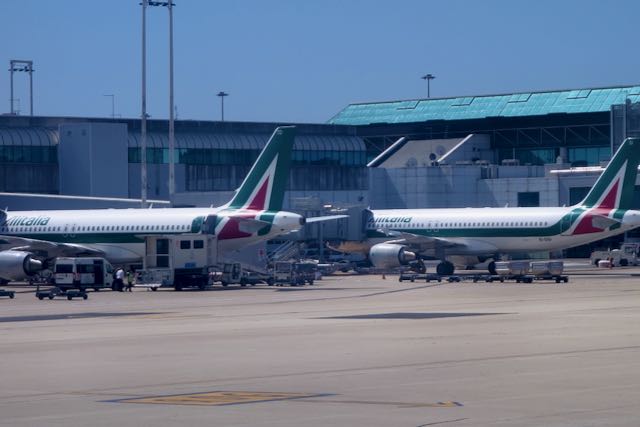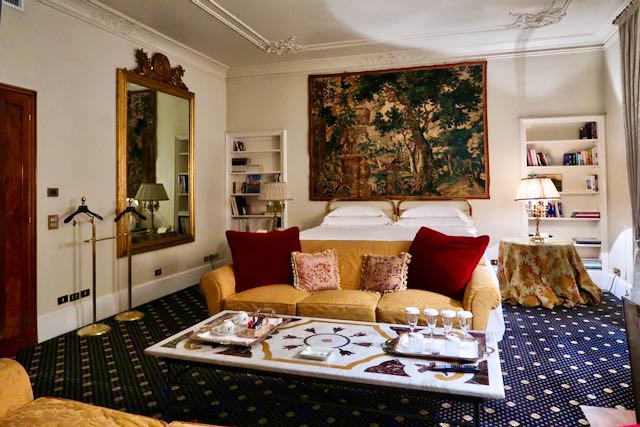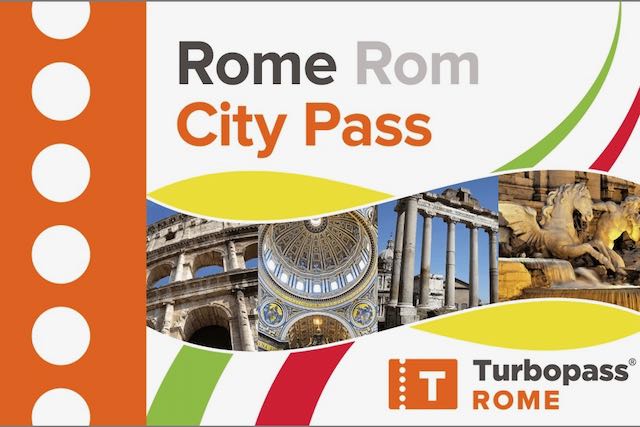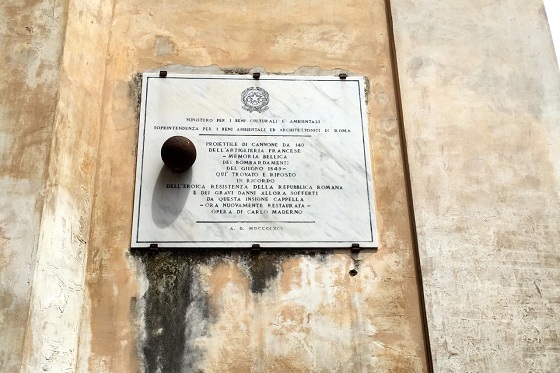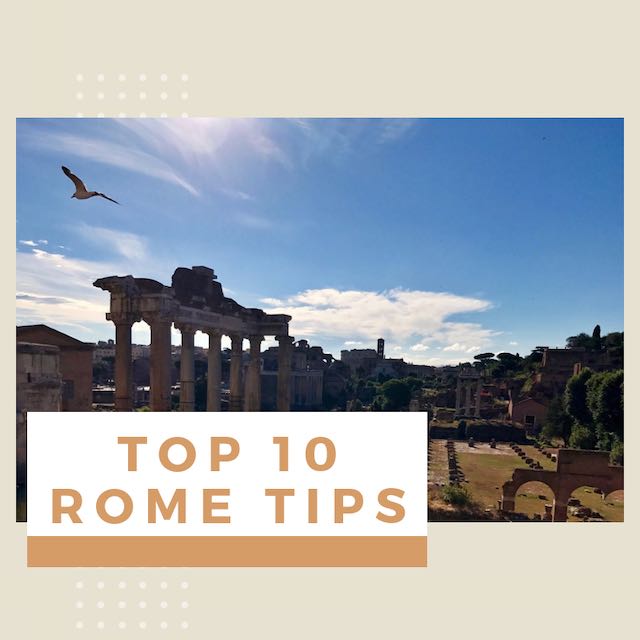- Sign up & get a FREE ebook Subscribe Today!
- Romewise Home Page
- What to Do in Rome
- Unusual Things to See in Rome
13 Unusual Things to See in Rome
Want to know where to find really unusual things to see in Rome?
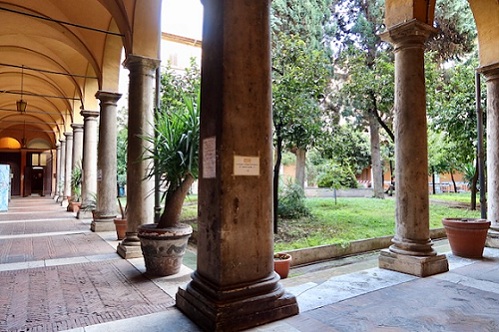 It's worth exploring churches in Rome to find Renaissance cloisters like this one inside Sant'Andrea delle Fratte.
It's worth exploring churches in Rome to find Renaissance cloisters like this one inside Sant'Andrea delle Fratte.I mean really off the beaten track, amazing things hidden (almost) from plain view.
While you wander around Rome checking out the major attractions like the Colosseum, see if you can find these.
Unusual Things to See in Rome - see if you know these
On a typical first-time 2-3 day visit to Rome, you may not have a chance or even the desire to look for these unusual things to see in Rome.
But if you are looking for some of the most off the beaten track things in Rome, here are a few of the more fascinating ones I've collected over my years of walking and wandering in Rome.
Frankly this page could have hundreds of things on it.
Eventually I'll make more pages like this with more fun unusual things to see in Rome.
Why not make a treasure hunt for yourself, and try to collect these unusual things to see in Rome (hint: there is a map at the bottom):
- The broken bridge
- Saint Valentine's skull
- The monkey tower
- Remnants of last medieval synagogue in Trastevere
- The medieval-era fountain inside a hidden church courtyard
- Medici crests in Rome
- The Magic Door
- The water clock in Villa Borghese
- Augustus' sundial
- The meridian line inside a basilica
- The cannonball in the wall
- History's permanent bullet holes
- The stepping stones of the Jewish Ghetto
Most of the unusual things to see in Rome on this page are free with the exception of the medieval fountain (1€ donation)
Unusual Things to See in Rome - Ancient Rome
Of course there is such a wealth of ancient Roman ruins even inside the city itself, you could endlessly find ancient unusual things to see in Rome.
For example, the Servian walls, from the time of the kings (700-300 BC more or less) are still left standing in lots of spots around Rome and most people don't realize what they are or how old they are.
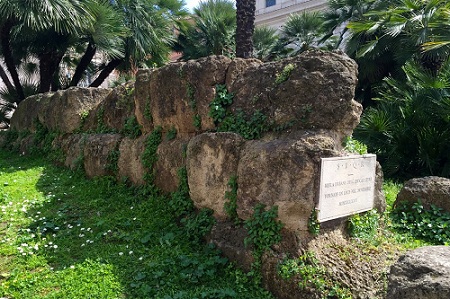 Servian Walls in the middle of a traffic island. "Urban Walls from the Time of the Kings". We are talking the seven kings of Ancient Rome here.
Servian Walls in the middle of a traffic island. "Urban Walls from the Time of the Kings". We are talking the seven kings of Ancient Rome here.But I find it amazing to see them still standing, right in the middle of a traffic island in the city center, or even running through the Termini train station.
Here are just a couple of ancient really unusual things to see in Rome that I find fascinating, and hope you do too:
Want more unusual things to see in Rome?
Check out my page Cemeteries in Rome (and near Rome) that you can visit!
1) The broken bridge
The Ponte Rotto (broken bridge) is the oldest Roman stone bridge in Rome. Dating from the 2nd century BC, and originally called Pons Aemilius, the bridge was destroyed by various floods over the centuries, and always rebuilt. Finally in the 16th century, half the bridge was washed away and they stopped fixing it.
What remains stands in the Tiber, next to the newer and sturdier Ponte Palatino (which I find pretty uninteresting even if it is useful.)
This is one of the more unusual things to see in Rome that really is hiding in plain sight. Most people have no idea it's here unless I tell them.
2) The skull of Saint Valentine
Many visitors in Rome flock to the Bocca della Verità (Mouth of Truth), made famous in the wonderful Audrey Hepburn/Gregory Peck 1953 movie Roman Holiday. In recent years they decided to make money off this and now, you have to pay to stand next to the Mouth of Truth and have your picture taken with it, presumably sticking your hand in its mouth as Audrey's character did in the movie. And this has caused huge queues that wrap around the entrance to the church where the Mouth of Truth is located.
However, there is no line whatsoever to get into the church itself (which is of course free.) And that is a shame indeed because it's a gorgeous Byzantine-era church, with cosmatesque floors, and high beamed ceilings that always seem to let in just the right amount of light to give the place a hushed and special feeling.
One of the curiosities in this church is the (alleged) skull of Saint Valentine, probably from around the 3rd century.
It's a bit of a grey area, since there was more than one saint Valentine and apparently there is more than one church in the world claiming to house his remains. In any case, it can be a special place to come and make a wish or just check out this relic, quietly sitting inside this un-crowded church behind all the crowds outside.
Want more unusual things to see in Rome from ancient times?
Check out the Domus Aurea, Nero's Golden House. A must-see!
Unusual Things to See in Rome - Medieval times
During the Medieval period, there was a lot of poverty and despair. People simply struggled to survive societal ills such as plagues, sacks of the city, unpleasant power-mongering between nobles, etc. So taking care of monuments, relics and artefacts was not high on anyone's list. That's one reason a lot of really ancient stuff (like the Egyptian obelisks) fell to ruins and abandon.
Rome was also pretty sparsely populated then (about 50,000 people give or take.) So there is a little less of medieval Rome to see today than there is from other periods.
However, we do have quite a few unusual things to see in Rome from that era. You just have to know where to look:
3) The Monkey Tower
This medieval tower sits surrounded by more modern buildings in the little street near piazza Navona called via dei Portoghesi.
The tower, actually called La Torre dei Frangipani, came to be called the Monkey Tower. Here's the legend and why:
About a thousand years ago, a family lived in this tower, with their small baby and pet monkey.
One day, the monkey, left alone with the baby for a few moments, took the infant to the top of the tower, ostensibly to play with him there.
The parents, horrified and desperate, prayed to the Virgin Mary that she help them get their son back safely. They promised that if she helped them, they would build a shrine to her.
Soon, the monkey brought the child back, safe and sound.
And so, of course, the family placed this madonna on top of the tower in homage to the Virgin Mary as promised.
Alongside her is an electric lamp, always on.
Want to find out even more Rome secrets?
Don't miss 111 Secret Places in Rome You must not Miss!
4) The last synagogue left in Trastevere
Trastevere was where Jews originally settled and lived in ancient Roman times. There was a thriving Jewish community there through medieval times, until 1555 when the Jews were forced to move to the other side of the river, in the area known today as the Jewish Ghetto.
In the quietest part of Trastevere, there is a tiny alleyway, Vicolo dell'Atleta (named Street of the Athlete because of a Greek statue Apoxyomenos, found there in the mid 1800's, today in the Vatican Museums.)
The street was originally called Vicolo delle Palme, probably because of palm trees planted there as a symbol of Judea.
One of the oldest synagogues in Rome was here, and it's the only one of seven from that era that remains at all.
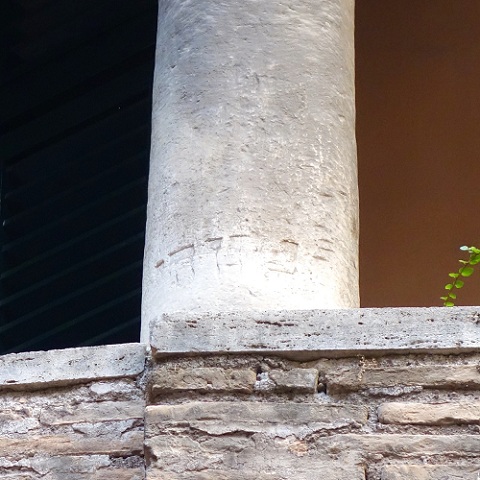 The middle column has faint but distinctive Hebrew writing on it
The middle column has faint but distinctive Hebrew writing on itFounded by lexicographer Nathan ben Jechiel (1035-1106), and eventually destroyed in a fire in 1268, there are still remnants of this synagogue, which you see here.
If you look very closely at the middle column, you can even see faint writing in Hebrew.
This is one of my favorite of the unusual things to see in Rome on this page, because I find many Romans do not even know of its existence.
You really have to know where to look and how to find it.
5) A sweet fountain hiding inside a precious monastery courtyard
By itself, the exquisite basilica of Santi Quattro Coronati is one of the more unusual things to see in Rome. Easily overlooked on its perch a few blocks away from, and above the Coliseum, it's one of the best examples of medieval architecture in Rome.
The basilica has many wonderful treats if you know where to look, like the 12th century frescoes inside a secret chapel, the foundling wheel and much more...
One of my favorite things to do with people who've never seen this church before is to take them into the secluded ancient cloister to the left of the main nave. You have to ring a bell so someone can let you in, and then pay a Euro "offering." The look on the faces of first-time visitors is worth every penny.
The basin in the middle of the fountain is from the 12th century. Many churches in Rome have hidden cloisters, but I think this one is by far the most beautiful.
The reason I find this fountain to be one of the loveliest of the unusual things to see in Rome is the whole setting overall: the basilica, all the secret and unknown little places to visit, and so much ancient and medieval stuff all in one spot.
Unusual Things to See in Rome - traces of nobility long gone
6) The Medici
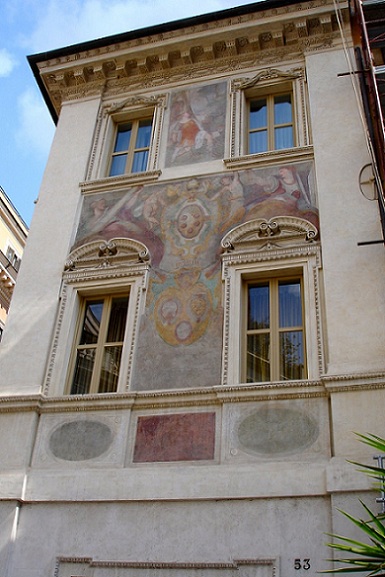 The palazzo di Tizio di Spoleto, which has a painting of St. Eustachio, and the Medici crest in the coat of arms of Pope Pius IV
The palazzo di Tizio di Spoleto, which has a painting of St. Eustachio, and the Medici crest in the coat of arms of Pope Pius IVThe Medici dynasty were prominent bankers, patrons of the arts, and cardinals and popes, from the mid 1400's - late 1700's. They are usually associated with the Tuscany area, specifically Florence.
One does not come to Rome looking for signs of the Medici family...but of course they were here too.
First of all, four of the Medici were popes.
Second of all, the family's influence and wealth were widespread, and it's understandable they would be responsible for investing in art and architecture in Rome as well as their native Florence.
If you look around Rome (particularly in churches and on ceilings), you might see the Medici crest (coat of arms), which is a distinctive horse-shoe shape of five red balls.
Maybe, then, the Medici crests are not such unusual things to see in Rome. But I find most people have no idea they are here, or where to find them.
My favorite of these is the richly colored fresco on the outside of a building, plainly visible yet often overlooked, right in the center of Rome.
The perfect 3-day itinerary in Rome
Trying to figure out how to organize your visit to Rome? I've got the perfect 3-day itinerary for first-time visitors (or those who have not been here in a while.) It works for a 2.5 day visit as well.
In my 3-day itinerary, you'll see all the major must-see Rome attractions like the Vatican, Colosseum, Trevi Fountain, Pantheon, Piazza Navona, Spanish Steps, Castel Sant'Angelo, and much more.
And if you have more time, or want suggestions for extra/other things to do, you'll find that there too.
Visit my page with the best 3-day itinerary in Rome for first-timers.
7) The Magic Door
Many visitors to Rome skip the park of Piazza Vittorio (Emanuele.) It's kind of near the Termini train station, not in the prettiest part of town, and certainly not that near any major tourist attractions (although it was one of the most important areas in Ancient Rome.)
But I find the park beautiful and peaceful to walk through (at least during the day.)
There is a dedicated dog-park, ruins of an ancient Nymphaeum, an odd dried fountain, a cat sanctuary, and, the Magic Door.
In the 1600's, a lot of people were very into alchemy and mysticism. This did not go over well, however, during the Inquisition, and practicers were often singled out, persecuted and sometimes executed.
The Marquis of Pietraforte, Massimiliano Palombara, whose Villa Palombara used to run along the edge of today's piazza Vittorio, was a well-known practitioner of alchemy. Due to his wealth and status, he mingled with other such luminaries of the day like Christina (the queen of Sweden), Giuseppe Francesco Borri, and Athanasius Kircher. The Marquis was likely also a member of a secret society called the Rosicrucians, a forerunner to Freemasonry.
The Marquis had created a sort of laboratory outside his villa, where he and Borri conducted experiments, trying to find the Philosopher's Stone, which could turn metal into gold. Legend says that Borri found the solution, but had to escape into the night, leaving his formula behind. So he (or perhaps the Marquis) inscribed Borri's writings onto the frame of the door for posterity, in hopes that one day someone could figure them out and use them to make gold.
The villa and its other gates and doors are long gone. But this Magic Door (also called the Alchemist's Door) remains, along with its inscriptions. In my opinion, this really is one of the most unusual things to see in Rome.
The two funny looking guards on either side of the door were not originally at the Villa Palombara.
They are Egyptian deities, and come from ancient Roman times, when there was a bit of Egypt-fever in Rome.
They were found near the Quirinale Hill, near an pre-Christian temple to Isis and Separis, and eventually placed here, as if to guard the door. I think they go very well together!
Unusual Things to See in Rome - telling time
Over the centuries, people found all kinds of ways to tell time. Traces of old timepieces are fascinating and sometimes very unusual things to see Rome.
8) The Water Clock in Villa Borghese
This curious water clock in the middle of the Borghese Gardens actually tells the time correctly. Amazing isn't it?
This marvel of mechanical engineering is based on using the force of the water that flows beneath it to move the pendulum and wind the clock. At the same time, the water alternatively fills two basins, which gives the clock its ringtone. The clock has four quadrants, which allow you to tell the time from any direction.
In 1867, a friar of the Dominican Order, Giovanni Battista Embriaco, presented two of these types of clocks (hydrochronometers) at the Paris Expo.
In 1873, one of these water clocks was placed in Villa Borghese gardens, on a fountain designed by the architect Gioacchino Ersoch.
Ersoch wanted to place the clock in perfect surroundings, and he settled on a little islet in a pond in the Borghese Park, where it still stands today. The idea was to show a harmony between technology and nature. In fact, to keep the clock in continuity with its surroundings, the base looks like tree trunks, although it is made of cast iron.
The water clock worked quite accurately until 2004 when it abruptly stopped working. Nobody was able to fix it, so, in 2007, it was completely re-engineered. Today it works perfectly, thanks to constant care and upkeep of its delicate mechanisms.
9) Augustus' sundial
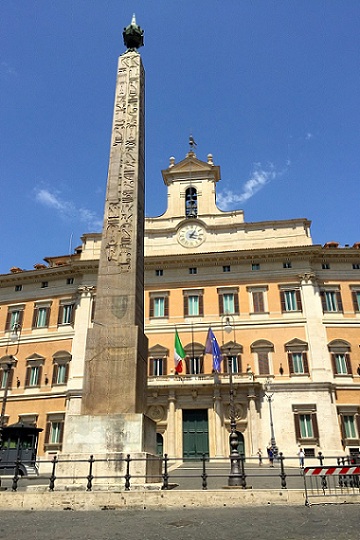
So now we step back about 2000 years. Not hard to do in Rome. How did the Roman's tell time back then?
Some of the unusual things to see in Rome are the 13 obelisks from ancient Egypt. These obelisks were brought over from Egypt (mostly as trophies) by various Roman emperors, and placed around Rome in strategic spots. In the middle ages, most of them broke apart, fell to the ground and often got buried by mud and dirt.
In the late 1500's, popes started restoring the obelisks and having them installed around Rome in front of monuments, plazas and churches. These obelisks were then inevitably topped with the symbol of that pope.
One of the obelisks most badly destroyed was the one you see today in piazza Montecitorio, home of the Italian Chamber of Deputies (parliament.)
This particular obelisk was originally from Heliopolis in around 600 BC, and was later brought to Rome from Egypt by Rome's first emperor, Augustus, and used as a sundial.
August used this obelisk as a gnomon (the thing that causes a shadow on a sundial) of his Solarium Augusti, (giant sundial, or horologium) in Campo Marzio. There was a floor made of travertine, with a meridian line where the shadow would fall to show the time.
Unfortunately (according to Pliny), the obelisk did not work at all after about 30 years.
I love the Rome ArtLover website for a wealth of detailed knowledge about art, architecture and history in Rome.
To read more about all of Rome's obelisks on the Rome ArtLover website, click here.
10) The meridian line inside a basilica
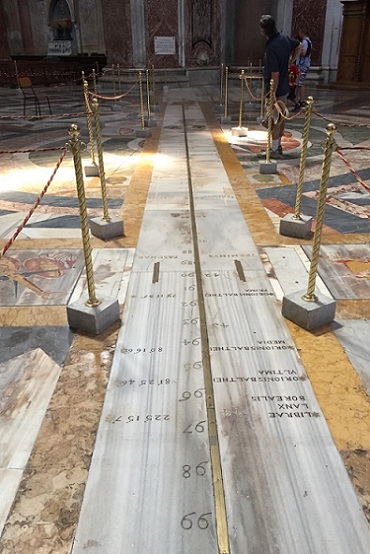
Another, later, example of a meridian line may be found on the floor of the Basilica of Santa Maria degli Angeli e dei Martiri.
At the beginning of the eighteenth century, Pope Clement XI commissioned the astronomer and mathematician, Francesco Bianchini to build a meridian line inside the basilica. It was completed in 1702.
Among other reasons, the pope wanted to check the accuracy of the Gregorian reformation of the calendar.
Bianchini's sundial was built along the meridian that crosses Rome, at longitude 12° 30' E. At solar noon, the sun shines through a small hole in the wall high above, and it lands on the meridian line at a spot that depends on the time of year.
At the summer solstice, the sun's ray hits the meridian line at the point nearest the wall. At the winter solstice, the sun beam hits the meridian line at the point farthest from the wall. At the spring and autumnal equinoxes, the sunbeam lands just between these two points.
It actually works pretty well, even today.
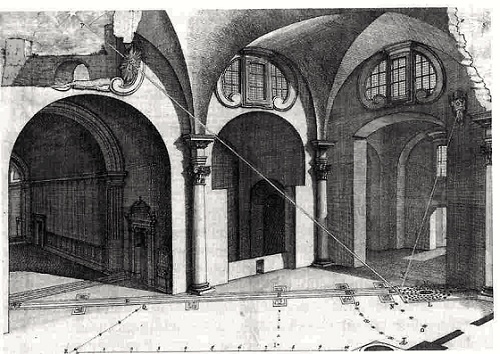 Diagram of Bianchini's meridian line, from his De Calendario (1703)
Diagram of Bianchini's meridian line, from his De Calendario (1703)This is one of the more unusual things to see in Rome, to me, partly because of the setting inside this amazing and magnificent church, and partly because the meridian line is flanked with signs from the zodiac, a later addition, but one that seems to go against church teachings.
Unusual Things to See in Rome - reminders of wars
As you can imagine, many wars were fought in this city since its founding in 753 BCE. In much of Europe, and certainly in Rome, it's common to find reminders of previous important moments in history, particularly of World War II.
See if you can find these fairly hidden reminders of more recent wars and their affects on the Eternal City.
Don't forget to bring these essential travel items with you!
Disclosure: If you make a purchase through a link on this page, I may receive a small commission - at no extra cost to you. Thank you for supporting my site!
11) A reminder of the bloody battle for the unity of Italy
For much of history, Italy was not a unified country. Most of what you think of as Italy today was a peninsula comprised of various and sometimes very divisive kingdoms, duchies and states.
By the early 1800's, Rome was under French control as part of the Papal States.
At the same time, nationalism was on the rise around Europe, and this included the area that is Italy today.
This is actually a long, complicated, and really fascinating history, and I am only learning about it in depth now that I have been living in Rome for so long.
But to cut to the chase: In 1849, the Janiculum Hill in Rome (Gianicolo) was the site of a very bloody battle fought by the forces of Giuseppe Garibaldi in their risorgimento, the resurgent movement to return Rome to a republic, against the French who wanted to restore the power of the Pope.
There are several very evident memorials to this battle and to Garibaldi, on the Gianicolo Hill.
One of the more unusual things to see in Rome and a more subtle reminder of this tremendous and historically important battle, is a French cannonball high on the outside wall of the church of San Pietro in Montorio.
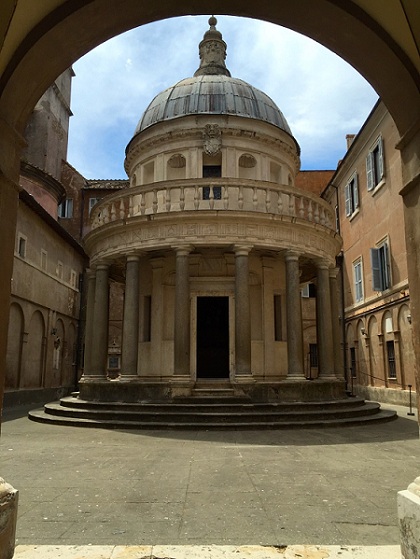
I don't mean this at all as an aside, because it's so special, but one of the most beautiful buildings in Rome is also at the site of this church.
Donato Bramante's Tempietto which marked the beginning of High Renaissance style in Rome.
You have to walk around the church to its right side and at the least peer through the gate of the courtyard there, if you can't get in.
Opening hours are limited but it is truly a jewel and another of my favorite unusual things to see in Rome.
12) A bullet-ridden building to remind us of a chapter in Roman WWII history
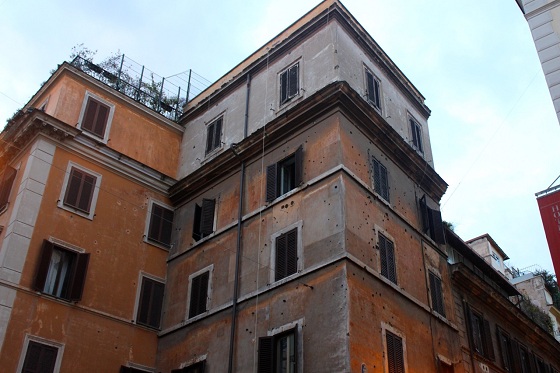 The bullet holes on this building on via Rasella are a permanent reminder of the WWII massacre at the Fosse Ardeatine, one of the worst atrocities committed on Italian soil during the war
The bullet holes on this building on via Rasella are a permanent reminder of the WWII massacre at the Fosse Ardeatine, one of the worst atrocities committed on Italian soil during the warOn March 23, 1944, a group of Partisans attacked a battalion of SS Policemen as it came down via Rasella. Just as the soldiers were coming down the street, the Partisans exploded a bomb they'd hidden in a rubbish cart.
Twenty-eight SS police died immediately (more of them would die over the next days.) In the panicked moments right after the bomb went off, the policemen who'd been knocked to the ground by the explosion grabbed their weapons and sprayed gunfire around themselves in self-defense.
The reasons this episode became so monumental is that, in reprisal for this attack, Hitler ordered 10 Italians killed for every Nazi who'd died. Every Jew, everyone in prison, and then eventually, even men and boys from the street were rounded up. Among them was also a priest.
At the time of the roundup, 33 SS had died, but instead of taking 330 men (and boys), the Nazi's took 335 by mistake.
On 24 March, led by SS officers Erich Priebke and Karl Hass, the Nazis took the their victims outside the city center to the via Ardeatine, and murdered them all in cold blood. By the time they'd realized they'd taken 5 people too many, it was too late, and so they killed these additional 5 as well, to prevent them from being witnesses.
The victims were buried in a cave there, called a fossa. They were discovered only after Rome was liberated in 1944. The event is today known as the Massacre of the Fosse Ardeatine.
On via Rasella, where the Partisan attack took place, most of the buildings have been renovated over the years. Today it's a pretty cobblestone street that leads from Piazza Barberini towards the Trevi fountain.
But this one building and its bullet holes remain, to remind us of the tragedies and horrors of war.
To me, this is one of the most important unusual things to see in Rome to remind us of WWII, because in a city that's always renovating its old buildings, this one is being purposefully left intact. Lest we forget.
13) Stepping stones in the Jewish Ghetto (stolpersteine)
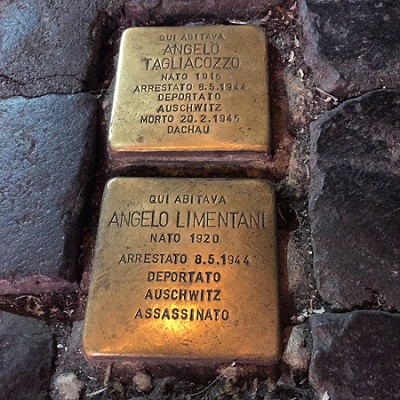 Stepping stones in Rome's Jewish Ghetto
Stepping stones in Rome's Jewish GhettoDuring WWII, more than 2000 Jews were deported from Rome and sent to Auschwitz (more than 7000 Jews from all over Italy were deported to deaths camps in the Reich.)
Only 102 of the Jews deported from Rome survived.
Today, Rome's Jewish community is thriving, still in the Ghetto neighborhood, which has today become one of central Rome's loveliest areas for strolling and eating.
In the mid 1990's, German artist Gunter Demnig had the idea to commemorate victims of the Holocaust by placing stolpersteine (stumbling blocks or stepping stones) in front of the last place the victims lived. The stone would be a way of symbolically returning that person to their home.
They are made of concrete, then covered in brass, and engraved - "Here lived..." and then "arrested" or "deported" and the date of death, and place of death if known.
There are now more than 40,000 of these blocks in cities all across Europe. They commemorate not only Jews but also many other victims of the Holocaust including gypsies, homosexuals, blacks, communists and others.
In Rome, these stepping stones are mostly concentrated along the streets of the Jewish Ghetto, where so many Jews lived during the occupation. But there are also stolpersteine all around other parts of Rome as well.
You just have to look down.
I find these to be unusual things to see in Rome because it's easy to walk around Rome today and forget that a major war took place in very recent history here.
I've also discovered many people do not know that Rome has a Jewish Ghetto. In fact, it was one of the first in Italy.
13 Unusual Things to See in Rome - a map
Click here to visit my interactive Google map showing all the places listed on this page. It will open in a new window.
Get your 100% free Rome trip planner now!
Simply sign-up today for our free newsletter and get the Romewise Quick Start guide to Rome:
We are committed to respecting your data. Click for our Privacy Policy.
Comments? Questions? Suggestions?
Please come over to the private Romewise Facebook group and join in the conversation.
You will often find me there, happy to answer your questions / comments!
You will also meet other Rome lovers and experts, too.
What are you waiting for?
- Romewise Home Page
- What to Do in Rome
- Unusual Things to See in Rome

